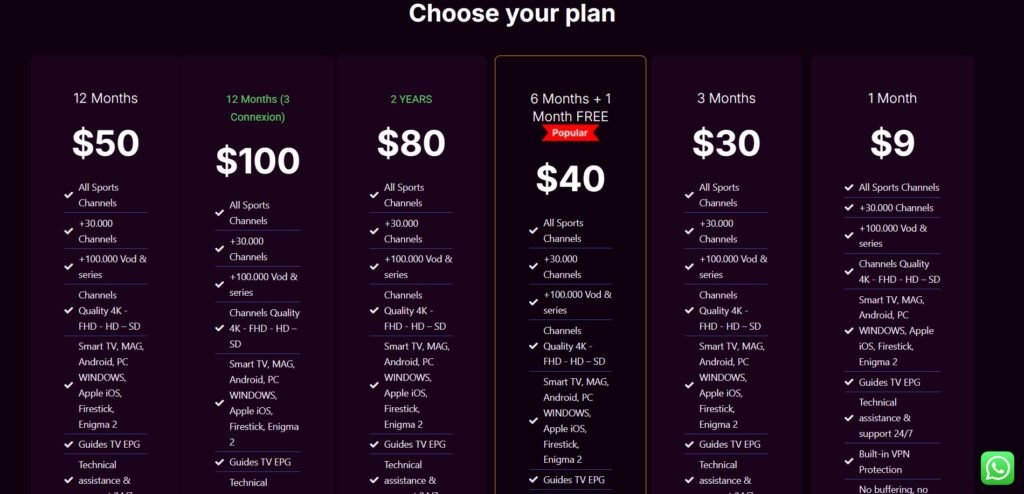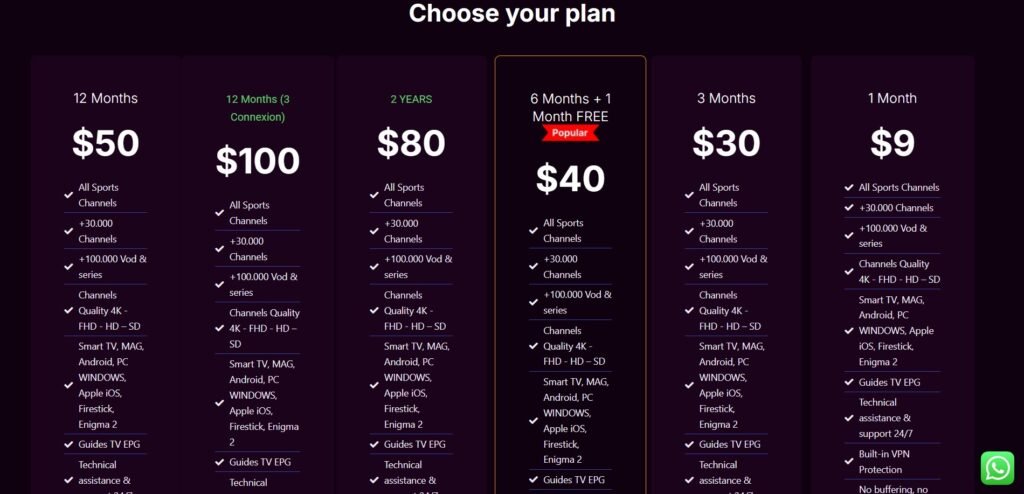What is IPTV ? : Are you tired of being tied down by traditional TV viewing schedules and limited content options? Imagine having the freedom to watch your favorite shows and movies at any time, on any device, with just a few clicks.
Internet Protocol Television (IPTV) is revolutionizing the way we consume television content, offering a flexible and personalized viewing experience. Unlike traditional broadcast, cable, or satellite TV, IPTV delivers live TV programs and on-demand video content via the internet.This shift in streaming technology is rapidly changing the landscape of home entertainment, providing users with greater control over their viewing habits. In this article, we’ll explore how IPTV works and what makes it an attractive alternative to conventional TV services.

Key Takeaways
- Understand the basics of IPTV and how it differs from traditional TV services.
- Learn how IPTV streaming works and the benefits it offers.
- Discover the flexibility and customization options available with IPTV.
- Find out how IPTV can enhance your viewing experience.
- Get insights into whether IPTV is the right choice for your entertainment needs.
IPTV is What? Understanding Internet Protocol Television
IPTV, or Internet Protocol Television, revolutionizes how we consume television content by leveraging the power of the internet. In essence, IPTV is a method of delivering television or video content to viewers via the internet, differing from traditional non-IPTV methods like cable or satellite.
The fundamental difference between traditional television and IPTV lies in how the content is delivered to your screen. Traditional methods transmit content through light pulses in fiber-optic cables or radio waves from satellites. In contrast, IPTV service providers deliver content directly through your broadband internet connection.
This shift in delivery method transforms your viewing experience. With IPTV, television programming is sent through the same internet protocol that delivers your emails and web browsing, allowing for a more interactive and personalized experience. You’re essentially receiving television content as data packets over the internet, enabling two-way communication between you and your content provider.
- IPTV uses internet technology to deliver television content, changing how you watch TV.
- Unlike traditional TV, IPTV allows for two-way communication, enabling interactive features.
- This technology leverages your existing internet bandwidth to deliver high-quality video content directly to your devices.
- Understanding IPTV means recognizing it as a digital evolution of television, integrating seamlessly with our connected lifestyles.
- With IPTV, you have more control over what, when, and how you watch your favorite programming.
By utilizing your internet connection, IPTV provides a flexible viewing experience that traditional television cannot match. This makes IPTV an attractive option for those looking for a more modern and personalized way to enjoy television content.
The Evolution of Television: From Cable to IPTV
You’ve witnessed a remarkable journey in television technology, from simple broadcast signals to advanced digital streaming services, over just a few decades. The transformation began with traditional cable and satellite systems that offered one-way content delivery with limited channel options and rigid scheduling.
A revolutionary shift occurred in the 1990s when video compression technology and improved data transmission methods made it possible to send television content through internet networks, laying the groundwork for what would become IPTV. This was made possible by two major technological developments: motion-compensated DCT video compression and asymmetric digital subscriber line (ADSL) data transmission.
The early 2000s saw pioneering IPTV services emerge as broadband internet became more widely available. Today’s IPTV represents the culmination of this evolution, delivering crystal-clear HD and 4K content, on-demand libraries, and interactive features that have completely transformed how we think about television media delivery and consumption.
| Television Technology | Key Features | Delivery Method |
|---|---|---|
| Traditional Cable/Satellite | Limited channels, rigid scheduling | One-way broadcast |
| IPTV | On-demand content, interactive features | Internet network |
As noted by industry experts, “The advent of IPTV has revolutionized the way we consume television, offering unparalleled flexibility and personalization.” This shift underscores the significant impact of streaming technology on modern entertainment.
How IPTV Works: The Technical Basics
By converting television signals into data packets, IPTV revolutionizes the way we consume television content. At its core, IPTV works by utilizing internet protocol to deliver television services over a network.
Unlike traditional broadcasting, where all channels are sent simultaneously in a multicast format, IPTV intelligently sends only the content you request. This approach optimizes bandwidth usage and enables features like video-on-demand and time-shifted viewing.
The IPTV system relies on two primary methods of content delivery: multicast for live TV, where many users receive the same content simultaneously, and unicast for on-demand content delivered individually to each user.
To understand IPTV’s technical foundation, let’s examine the key components involved:
| Component | Description | Function |
|---|---|---|
| IP Networks | Utilize internet protocol to deliver content | Enable efficient data packet transmission |
| Video Compression | Reduces file sizes without compromising quality | Allows high-definition content to stream smoothly |
| Content Delivery Networks (CDNs) | Strategically distribute video across multiple servers | Ensure smooth, buffer-free streaming |
Your IPTV experience is powered by sophisticated video compression technology that reduces file sizes without compromising quality. This technology, combined with content delivery networks (CDNs), ensures that you receive high-quality streaming regardless of your location or network conditions.
By leveraging these technical advancements, IPTV provides a superior viewing experience, transforming your ordinary internet connection into a powerful television delivery system.
IPTV vs. Traditional Television: Key Differences

When comparing IPTV to traditional television, several key differences emerge that can significantly impact your viewing experience. The primary distinction lies in how content is delivered to your device.
In traditional television delivery, all programming is broadcast simultaneously in a Multicast format. This means that the available program signals flow downstream, and you select programs by changing the TV channel. In contrast, an IPTV service sends only one program at a time, using a unicast format. The content remains on the internet service provider’s network, and only the program you select is sent to your device.
| Feature | Traditional Television | IPTV |
|---|---|---|
| Content Delivery | Pushes all channels simultaneously through cable or satellite connections | Delivers only requested content through your internet connection |
| Viewing Schedule | Follows rigid broadcasting schedules | Offers on-demand viewing, giving you control over your entertainment schedule |
| Subscription Model | Typically requires long-term contracts with equipment rental fees and installation costs | Often provides more flexible subscription models without the need for specialized hardware beyond a streaming box |
The user experience also differs significantly between the two. Traditional TV offers a linear, passive viewing experience with limited interaction. In contrast, IPTV provides an interactive interface with features like content recommendations, search functionality, and personalized user profiles.
Lastly, traditional television services are geographically limited by physical infrastructure. IPTV breaks these boundaries by allowing you to access your content from virtually anywhere with an internet connection, transforming how and where you consume your favorite shows.
The Three Main Types of IPTV Services
You can enjoy IPTV through three main service types, each designed to enhance your viewing experience in unique ways. These services work together to provide a comprehensive entertainment ecosystem that caters to various viewer needs.
Video on Demand (VOD)
Video on Demand (VOD) services allow you to select and watch videos whenever you want. This flexibility eliminates the constraints of broadcast schedules, giving you access to a vast library of content at your fingertips. With VOD, you can watch movies, TV shows, and other video content on your own schedule. The content available through VOD services is typically extensive, and you can browse through various genres and categories to find something that suits your mood.
Time-Shifted Media
Time-Shifted Media enables you to watch recently aired programs at your convenience, typically within a limited window after the original broadcast date. This service is particularly useful if you miss a TV show or sporting event. Many broadcast networks now offer catch-up TV, allowing you to stay up-to-date with your favorite programs even if you weren’t able to watch them live.
Live IPTV Broadcasting
Live IPTV Broadcasting brings traditional live television into the digital age, streaming real-time content through your internet connection. This service ensures that you never miss important events, breaking news, or sporting competitions. Live IPTV is especially popular for watching sporting events, as it allows you to stream games on your phone or other devices while on the go.
Here’s a summary of the three main IPTV services in a comparative format:
| Service Type | Description | Key Benefit |
|---|---|---|
| Video on Demand (VOD) | Watch videos at your convenience | Flexibility in viewing schedule |
| Time-Shifted Media | Watch recently aired programs | Catch up on missed shows |
| Live IPTV Broadcasting | Stream live TV content | Real-time access to events |
Equipment Needed for IPTV Streaming
As you embark on your IPTV journey, understanding the necessary equipment is crucial for a smooth and enjoyable experience. To fully immerse yourself in the world of IPTV, you’ll need devices that can handle the demands of internet-based television.

Set-Top Boxes and Smart TVs
To enjoy IPTV on your television, you may need a set-top box if your TV isn’t a smart TV or doesn’t have built-in IPTV capabilities. Popular options include Apple TV, Roku, and Amazon Fire TV, which can decode IP signals and convert them into content your TV can display.
Modern smart TVs often come with integrated IPTV capabilities, providing a streamlined interface for accessing your content directly through built-in apps and services. If you have an older TV, consider using a set-top box to upgrade your viewing experience.
Internet Requirements and Network Considerations
Your internet connection is the backbone of your IPTV experience. Most providers recommend a minimum speed of 10-25 Mbps for standard definition content and 25-50 Mbps for high-definition or 4K streaming to ensure smooth playback.
For bandwidth-intensive IPTV streaming, a reliable and stable internet connection is essential. Wired ethernet connections typically provide more consistent performance than Wi-Fi, ensuring a buffer-free viewing experience.
If you encounter any technical difficulties with your equipment setup, our dedicated support team is available at +212 707 015 747 or via email at support@ultrastreampro.net to help you optimize your IPTV streaming experience.
Benefits of IPTV Over Traditional Television

With IPTV, you’re not just a passive viewer; you’re in control of what you watch and when you watch it. This level of control is a significant departure from traditional television viewing, where you’re tied to broadcast schedules. IPTV offers a range of benefits that enhance your viewing experience, making it more flexible, accessible, and personalized.
Flexibility and On-Demand Viewing
One of the standout features of IPTV is its flexibility. Unlike cable or satellite TV, where you’re locked into a broadcast schedule, IPTV allows you to watch your favorite shows and movies on demand. You can access vast libraries of content and choose what you want to watch, when you want to watch it. This flexibility transforms your relationship with television content, giving you the freedom to create your own viewing schedule.
- Enjoy video on demand (VOD) services that let you pick from a vast library of content.
- Experience time-shifted media, allowing you to watch previously aired content at your convenience.
Multi-Device Accessibility
IPTV isn’t just about watching TV on your television set. With IPTV, you can enjoy your favorite shows and movies on multiple devices, including smartphones, tablets, and computers. This multi-device accessibility means you can start watching something on one device and pick it up where you left off on another, seamlessly integrating into your lifestyle.
Interactive Features and Personalization
IPTV services often come with interactive features that enhance your viewing experience. These can include the ability to vote in live shows, access additional information about the content you’re watching, and even participate in polls or quizzes. Moreover, many IPTV services use algorithms to offer personalized recommendations based on your viewing habits, helping you discover new content that you’ll enjoy.
| Feature | Benefit |
|---|---|
| On-Demand Viewing | Watch content at your convenience |
| Multi-Device Support | Seamlessly switch between devices |
| Interactive Features | Engage more deeply with the content |
| Personalization | Discover new content tailored to your preferences |
Popular IPTV Providers and Services

The IPTV landscape is populated by a variety of providers, ranging from major telecommunications companies to niche streaming services. You have access to a diverse ecosystem of IPTV providers, each offering unique content libraries and features to enhance your viewing experience.
Major players in the IPTV market include established companies like Netflix, Hulu, YouTube TV, and Amazon Prime Video. These services have transformed from simple video platforms into comprehensive entertainment services with original programming and live TV options.
Traditional telecommunications companies have also evolved their offerings to include IPTV services. Providers like Verizon (FIOS), AT&T (U-verse), and Comcast (Xfinity) have integrated internet protocol television into their existing infrastructure, offering a wide range of channels and on-demand content.
In addition to these major players, there are specialized IPTV services that cater to niche interests and specific content categories. Services like Amazing TV, FalconTV, and Xtreme HD IPTV provide focused libraries of programming that might not be available through mainstream providers.
When selecting an IPTV provider, you should consider factors beyond just price. Key considerations include content library size, streaming quality options, device compatibility, and additional features like cloud DVR or multiple simultaneous streams.
For information about our premium IPTV services at UltraStreamPro, which combine extensive content libraries with cutting-edge streaming technology, you can contact our team at +212 707 015 747 or email support@ultrastreampro.net for personalized assistance.
The Future of IPTV and Streaming Technology
With the IPTV market expected to skyrocket, you’re about to experience a seismic shift in how you access and enjoy your favorite content. According to Mordor Intelligence, the market is projected to be worth over $105 billion by 2029, more than double the estimated $44 billion in 2024. This explosive growth is a testament to the revolutionary impact of IPTV on the television industry.
Key Trends Shaping the Future:
- The integration of artificial intelligence and machine learning algorithms will personalize your viewing experience, predicting what you’ll want to watch next.
- The deployment of 5G network infrastructure will eliminate bandwidth constraints, enabling higher resolution streaming and seamless mobile viewing.
- Technological innovations in video compression will allow for higher quality content delivery while using less bandwidth, making 4K and 8K streaming more accessible.
- The boundaries between traditional television and IPTV will continue to blur as major networks develop their own streaming platforms.
- The global expansion of high-speed broadband networks will bring IPTV services to previously underserved markets.
As Grand View Research notes, “The growth of OTT services and the IPTV business is being fueled by the rise in digitalization and the increased use of mobile devices by people.” This indicates a significant shift towards more personalized and accessible entertainment.
The future of IPTV is bright, with subscription-based services like TVPlayer and Hulu Live TV expected to gain popularity. As the technology continues to evolve, you can expect a more diverse content ecosystem and improved viewing experiences.
Conclusion: Is IPTV Right for You?
The future of television is here, and IPTV is at the forefront, offering unprecedented flexibility and content variety. You’ve now explored the comprehensive world of IPTV technology, from its technical foundations to its practical applications.
This modern approach to television viewing offers compelling advantages, including on-demand content, multi-device accessibility, and personalization features that traditional cable and satellite services can’t match.
When considering IPTV, it’s essential to evaluate your internet connection quality, ensuring it meets the minimum recommended speed of 10-25 Mbps for a seamless viewing experience. You’ll also need compatible devices to access IPTV services.
If you’re ready to experience the future of television viewing with premium content and cutting-edge technology, contact UltraStreamPro today at +212 707 015 747 or email support@ultrastreampro.net to discover how our IPTV solutions can transform your entertainment experience.
FAQ
How does Internet Protocol Television deliver content?
Internet Protocol Television delivers content through your broadband connection, allowing for a more flexible and personalized viewing experience.
What are the main advantages of using a Set-Top Box for IPTV services?
A Set-Top Box enables you to access various streaming services and video content on your television, providing a more comprehensive entertainment experience.
Can I watch Live TV with Internet Protocol Television?
Yes, many IPTV providers offer Live IPTV Broadcasting, allowing you to watch your favorite TV channels in real-time.
What are the internet requirements for smooth IPTV streaming?
A stable internet connection with sufficient bandwidth is necessary for uninterrupted IPTV streaming. A minimum speed of 25 Mbps is recommended for HD content.
Can I access IPTV services on multiple devices?
Yes, many IPTV providers offer multi-device accessibility, allowing you to watch your favorite content on various devices, including smartphones, tablets, and smart TVs.
How does Video on Demand (VOD) work with IPTV?
VOD allows you to browse and watch a vast library of video content at your convenience, without being tied to a traditional broadcast schedule.
Are there any issues with buffering or lag when using IPTV?
Buffering or lag can occur if your internet connection is not stable or if your bandwidth is insufficient. Ensuring a reliable connection can help minimize these issues.
